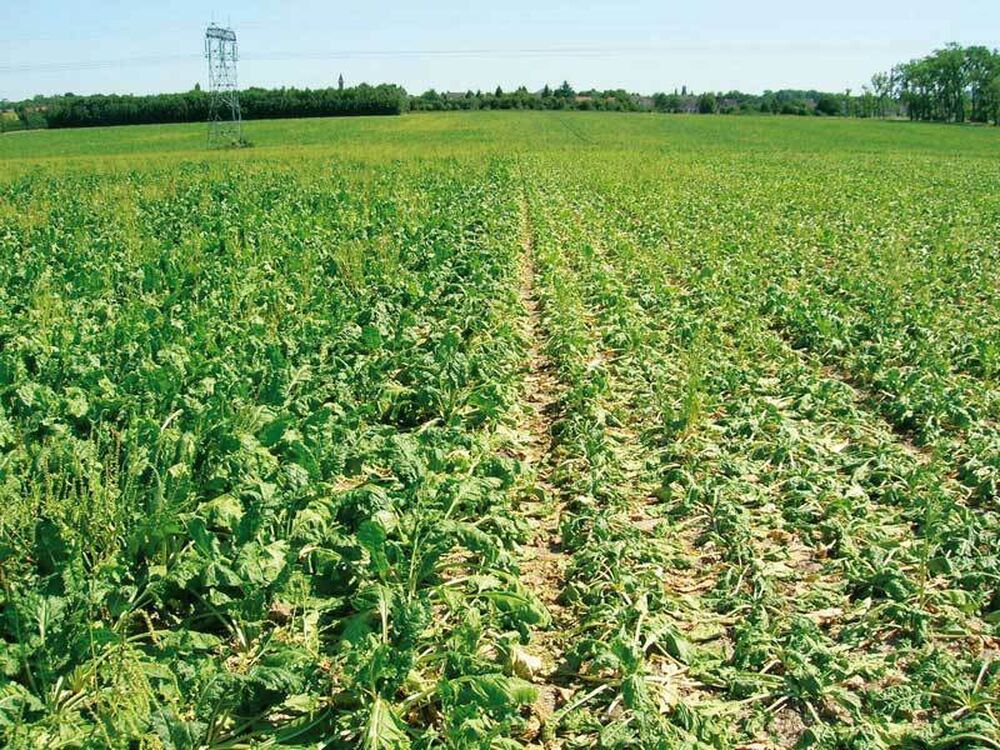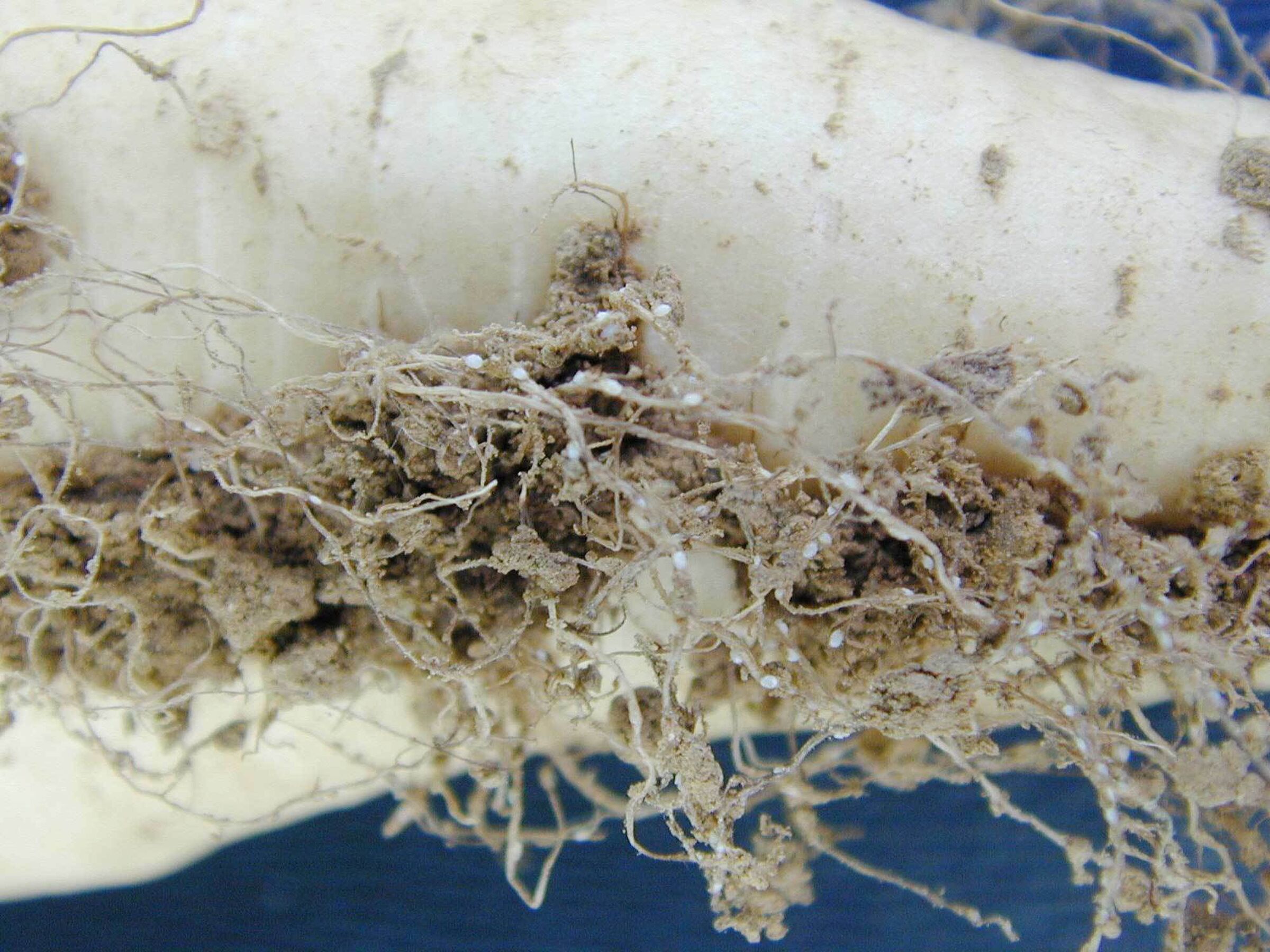The white beet cyst nematode (Heterodera schachtii) is a small white worm, approximately 1 mm long, that can move through soil. Nematodes attach themselves to the roots of sugar beet plants and feed on the contents of root cells. This can sometimes lead to proliferation of root hairs, which develops at the expense of the taproot.
What are the symptoms of a nematode infection?
Symptoms of a white beet cyst nematode outbreak typically appear in the form of clear patches in the field.
- Foliage symptoms of nematodes in sugar beet:
From June onwards, wilting may be observed. This can progress to yellowing, followed eventually by necrosis of the outer leaves. - Root symptoms of nematodes in sugar beet:
The taproot remains underdeveloped, and there may be excessive root hair formation. Small white or brown lemon-shaped cysts can often be seen on the root hairs.

How are nematodes spread?
The nematodes’ capacity to move through the soil is relatively limited. However, cysts can be dispersed by:
- Water: rainfall, run-off, irrigation, etc.
- Soil transportation: erosion, earth work, uprooting
Favourable conditions for nematode development include:
- Wet springs, which promote multiplication
- Dry summers, which intensify visible damage
- High soil temperatures
Currently, this parasite is one of the main sugar beet pests, capable of causing major yield losses by reducing root yield and increasing soil tare. It is found worldwide and in Europe, especially in sugar beet growing areas where rotation is short and other host plants are present.
How to control beet cyst nematodes?
Protection of sugar beet against the beet cyst nematode must above all include agronomic measures:
- Extension of rotation (from 3 to 5 years)
- Early sowing
- Avoidance of host species in the rotation
- Crop hosts: sugar beet, spinach, cabbage, and rapeseed, …
- Intermediate crops: white mustard, fodder radish and some leguminous vegetables
- Numerous adventitious plants
- Sowing a nematicidal crucifer as an intermediate crop, to help suppress the nematode population
In some cases, a variety that is tolerant to both rhizomania and nematodes can also be sown. In France, the ITB advises sowing a double rhizomania-nematode tolerant variety in the event of:
- Lower production than the local average
- Magnesium deficiency symptoms are visible in foliage
- Wilting at the hottest time of the day
- The presence of cysts, if possible confirmed by a nematological analysis.

